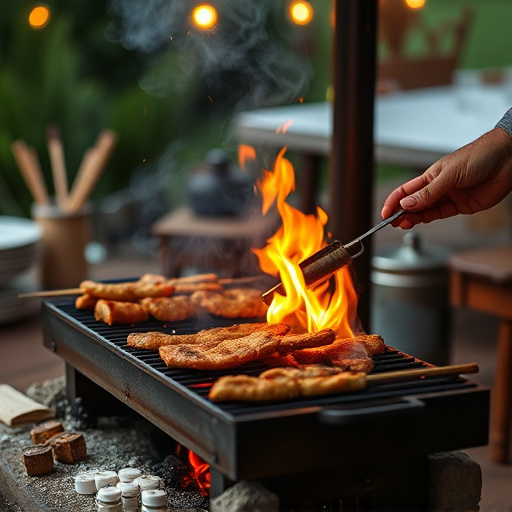Crafting delicious BBQ beef burnt ends requires selecting a high-quality, well-marbled cut like brisket or rib eye, seasoning it generously with a BBQ rub, and slow-cooking it at low temperatures (225-250°F/107-121°C) over wood coals. After reaching an internal temp of 165°F (74°C), sear the meat over high heat to caramelize edges, maintaining a final temperature of 203°F (95°C). Serve on salad greens with tangy vinaigrette, paired with potatoes or corn for a hearty meal. Master this technique for a standout BBQ beef recipe that caters to wine and craft beer lovers alike.
“Unleash your inner BBQ connoisseur with our guide to crafting mouthwatering Smoky Beef Burnt Ends. This ultimate guide delves into every aspect of achieving perfection, from selecting the juiciest cuts of beef to mastering the art of smoking. Learn the secret techniques to achieve crispy caramelized edges and flavorful burnt ends that will leave your taste buds dancing. Discover serving suggestions, pairing ideas, and invaluable tips to make this BBQ beef recipe a game-changer for any gathering.”
- Ingredient Selection and Preparation
- Smoking Technique for Optimal Flavor
- Achieving the Perfect Burnt Ends
- Caramelizing Edges: A Key Step
- Serving Suggestions and Pairings
- Tips for Mastering This BBQ Beef Recipe
Ingredient Selection and Preparation
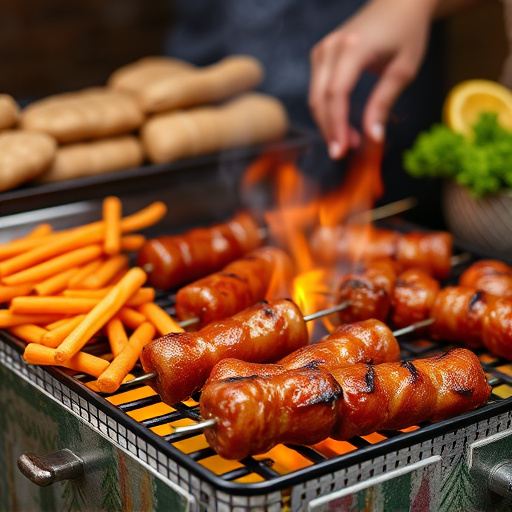
When crafting your BBQ beef burnt ends with caramelized edges, ingredient selection is key to a stellar bbq beef recipe. Start by choosing a high-quality cut of beef brisket. Look for a well-marbled piece, as this will ensure tender and flavorful meat after slow-cooking. The right fat content is essential; too little, and the meat may become dry; too much, and it might not render properly.
Preparation is half the battle in any bbq beef recipe. Trim any excess fat to control the cooking process but leave enough to keep the meat moist. Season generously with your favorite BBQ rub before smoking. This step will impart a deep, smoky flavor that defines burnt ends. Some chefs even choose to caramelize the edges of the brisket by searing it in a hot cast-iron skillet before smoking, adding an extra layer of rich, sweet taste.
Smoking Technique for Optimal Flavor
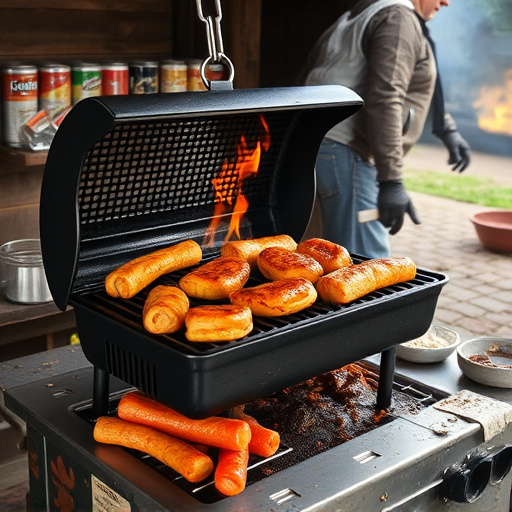
Smoking is a key technique in enhancing the flavor of BBQ beef recipes, particularly when it comes to achieving those coveted burnt ends. The process involves slowly cooking meat at low temperatures over wood coals or chips, allowing for a deep, rich taste that permeates every bite. For optimal results, start by selecting a good quality cut of beef, such as brisket or rib eyes, and prepare it with your favorite dry rub or marinade. Then, fire up your smoker to around 225-250°F (107-121°C). This temperature range is ideal for slow cooking, ensuring even doneness and tender texture.
Use hardwoods like oak, hickory, or mesquite for smoking, as they impart a delightful smoky flavor. Maintain consistent heat and humidity within the smoker throughout the process. The meat should cook until it reaches an internal temperature of 165°F (74°C) for safety. Once done, let the beef rest before slicing against the grain to achieve those desirable caramelized edges and succulent textures, a hallmark of any successful BBQ beef recipe.
Achieving the Perfect Burnt Ends
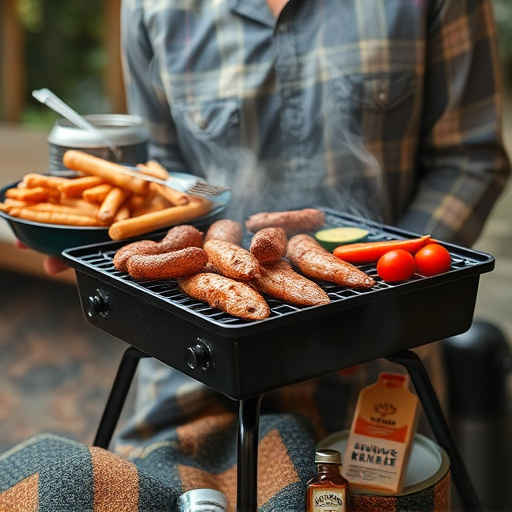
To achieve the perfect smoky, caramelized burnt ends in your BBQ beef recipe, start by selecting a good quality cut of beef, such as a brisket or rib eye. The key to successful burnt ends lies in slow-cooking the meat until it’s tender and then finishing it off with direct heat to create those coveted crispy edges. Low and slow is the motto for achieving the ideal texture – aim for an internal temperature of around 165°F (74°C) before moving on to the next stage.
Once the meat is tender, increase the heat to sear it directly over high heat. This step is crucial for developing the smoky flavor and caramelization. Use a grill brush to scrape off any excess fat, then flip the meat regularly until both sides are nicely charred. Keep an eye on the temperature; you want to aim for a final internal temperature of about 203°F (95°C) to ensure the meat is cooked thoroughly while maintaining its juicy texture.
Caramelizing Edges: A Key Step
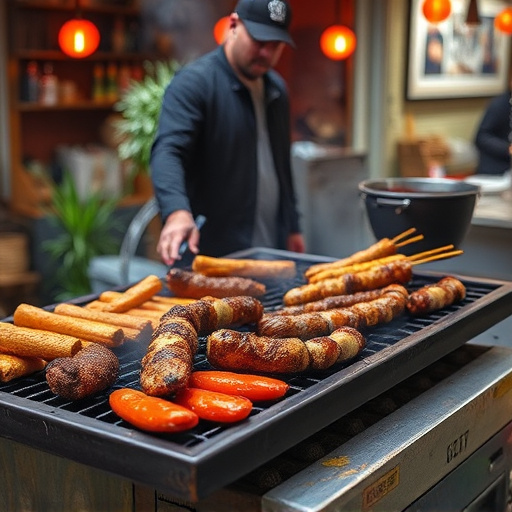
Caramelizing edges is a crucial step in creating the signature flavor and texture of smoky BBQ beef burnt ends. This technique involves cooking the meat at high temperatures, allowing the natural sugars to break down and create a rich, caramelized exterior. When preparing your BBQ beef recipe, ensure you sear the meat thoroughly before moving on to the slow-cooking process. The heat not only seals in juices but also begins the transformation of the surface layer, turning it into a delectable crust.
By focusing on this key step, you can elevate your BBQ beef from ordinary to extraordinary. The caramelized edges add depth and complexity to the overall flavor profile, enhancing the smoky notes that define burnt ends. This simple yet effective technique is what makes home-cooked BBQ stand out, so don’t skip it in your culinary journey towards perfect smoked beef.
Serving Suggestions and Pairings
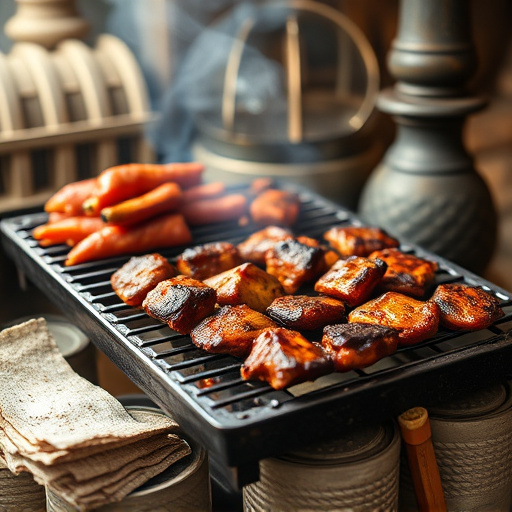
When serving this mouthwatering BBQ beef recipe, consider a generous portion of smoky burnt ends on a bed of crisp salad greens, drizzled with a tangy vinaigrette. The contrast between the tender meat and caramelized edges with the crunch of fresh vegetables creates an explosion of flavors. For a hearty meal, pair it with roasted potatoes or corn on the cob, allowing the sweet and savory notes to intertwine.
Wine lovers might opt for a full-bodied red to complement the rich beef, while craft beer enthusiasts can enjoy an IPA or a robust porter, cutting through the smoky sweetness. The versatility of this dish extends to various dining occasions, whether it’s a casual get-together or a more formal gathering, making it a favorite among BBQ enthusiasts and culinary connoisseurs alike.
Tips for Mastering This BBQ Beef Recipe
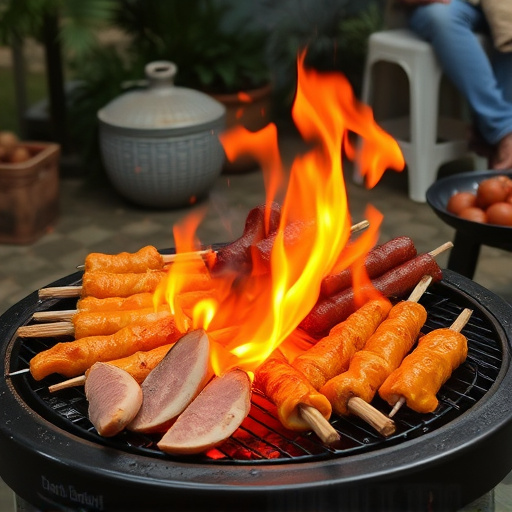
Mastering the art of smoky beef burnt ends with caramelized edges involves a few key techniques. First, start with high-quality, well-marbled beef brisket. This ensures a rich flavor profile and tender texture. Pre-cooking the brisket slowly at a low temperature before finishing it off at a higher heat creates the perfect blend of moist interior and crispy exterior.
For that signature caramelized edge, finish your meat directly over high heat, allowing the natural sugars to intensify. Use a variety of woods for smoking, like oak or hickory, to impart unique flavors. Letting the beef rest after cooking allows the juices to redistribute, ensuring a juicy and tender result. Lastly, don’t be afraid to experiment with seasonings—a blend of salt, pepper, and your favorite spice rub will enhance the natural taste of the beef.
